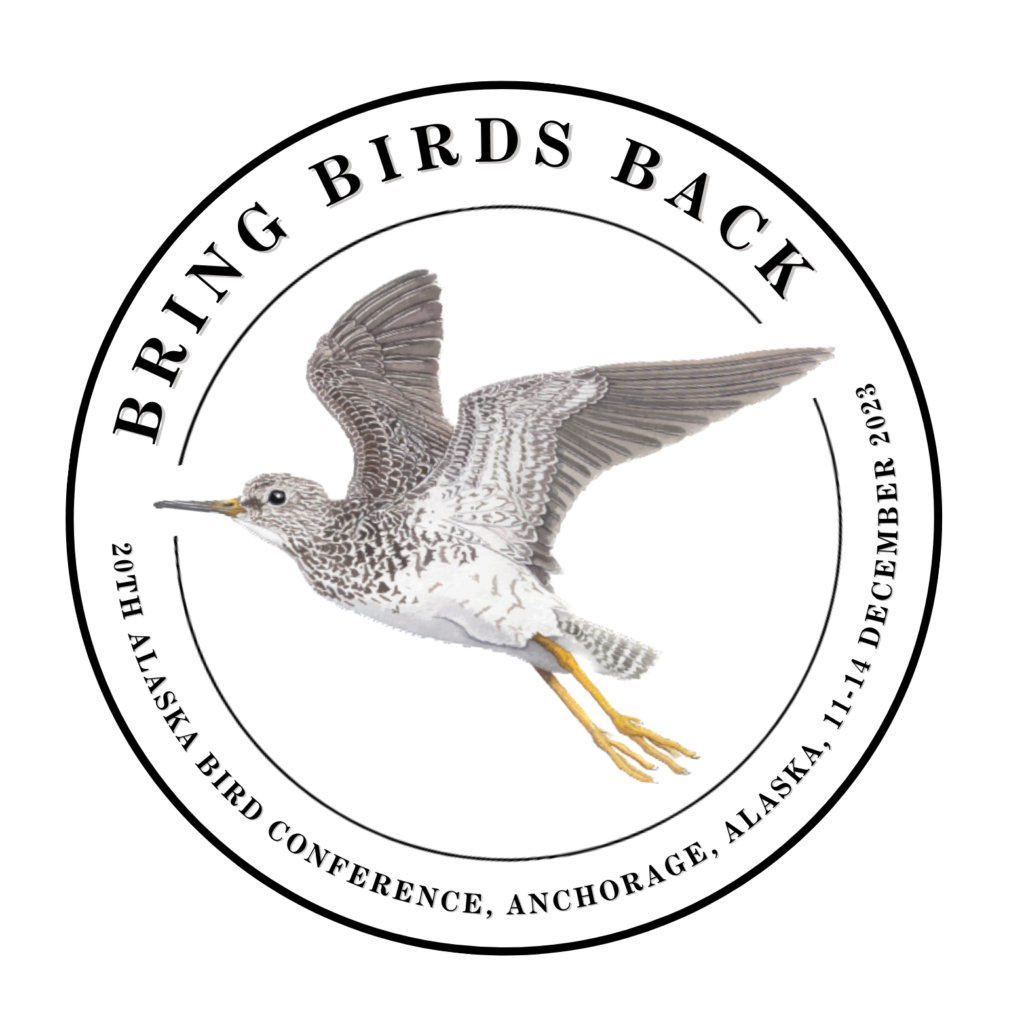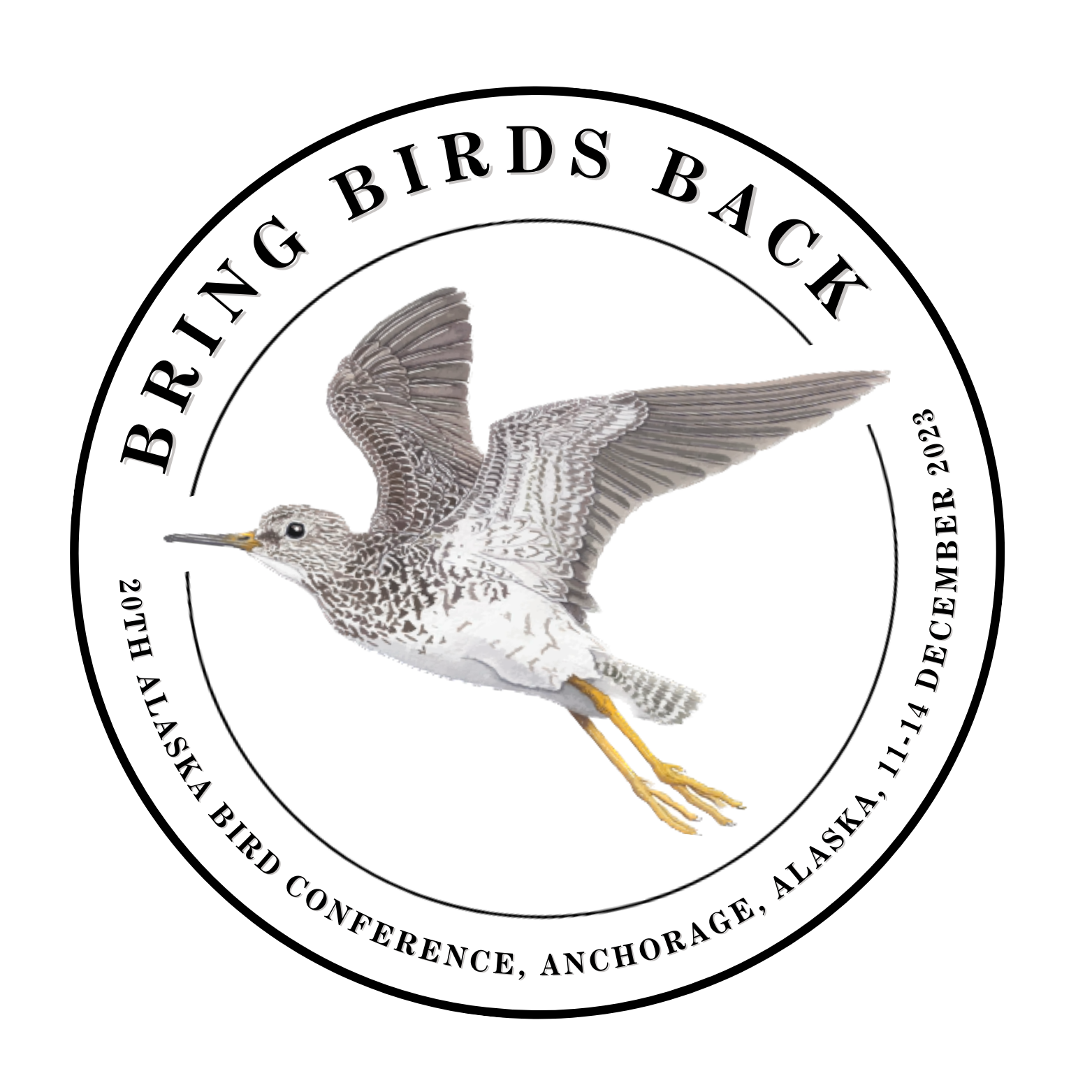Welcome to the Conference website that show cases the 20th Alaska Bird Conference to be held from 11-14 December 2023 at The Hotel Captain Cook in Anchorage, Alaska.
The conference is being organized by the US Fish and Wildlife Service’s Migratory Bird Management Division, with significant contributions and logistical support from other US Fish and Wildlife Divisions; U.S. Geological Survey’s Alaska Science Center; Alaska Department of Fish and Game’s Threatened, Endangered, and Diversity Program; Bureau of Ocean Energy and Management; Audubon Alaska; and Alaska Biological Research Associates, Inc. Please see our sponsor page to see how these and other entities are providing finances, people, and ideas to allow us to have a successful meeting. We wish to thank our event planner, Ms. Jenada Johnson from Events Embellishments, LLC. for helping us have a successful meeting.
The first Alaska Bird Conference was held in Anchorage in 1985. It grew from the often expressed need for exchange of information among those in government, universities, non-government organizations, and the private sector who are working with Alaska’s diverse and abundant birds. The conference has been held on an approximately biennial basis ever since.
This year marks the 20th Alaska Bird Conference. The Conference regularly attracts between 150 and 200 participants reporting on their latest findings and new initiatives. By design, the conference retains a familiar and friendly atmosphere, welcoming new students and ornithologists into the fold, and providing a much-anticipated gathering for those who work with and care about Alaska’s birds.
The theme of the conference is “Bring Birds Back”. We chose this theme to highlight the peril many migratory bird species face today as they transit between their breeding, migratory stopover, and wintering areas. During their annual cycle, resident and migratory birds encounter a variety of hazards that have led to a large-scale decline of nearly 3 billion birds between 1970 and 2017 (Rosenberg et al. 2019). Dr. Pete Marra who is a co-author of this paper, will present information related to this topic during his keynote speech at the conference and at a special community event during the evening. We encourage all attendees to consider this theme when preparing your talks and posters. Please show the ornithological community and the public how your research, conservation, and outreach activities are helping us bring our birds back.
Our logo consists of a beautiful drawing of a Lesser Yellowlegs (Tringa flavipes) created by Ms. Alexander (Sasha) Munters (http://www.sashaparula.com) and layout design by Grace Rodgers. The Lesser Yellowlegs is a Neotropical migrant that breeds in the boreal forest of Alaska and Canada and migrates to Central and South America to winter. Recent estimates from migration surveys from eastern USA and Canada suggest the species has declined 60-80% over the past 50 years, and data from Alaska suggests a 5.3% decline within the Northwestern Interior Forest Bird Conservation Region. This species like no other speaks to the need to bring birds back through concerted research, conservation, and education throughout its annual cycle.
We have endeavored to put on an exciting conference over a 4-day period (11-14 December 2023). Join taxon-specific bird groups during the day on Monday and then join us for our opening night reception in the Hotel Captain Cook’s top floor. The next three days will feature keynote speakers in the morning, followed by 20-minute talks throughout the day. Wednesday night will be a special event night at the Anchorage Museum at Rasmuson Center where we will have a celebration of “Art and Conservation.” We will also have an evening banquet on Thursday where we will enjoy fine food provided by The Hotel Captain Cook and then present awards to honor conference best performers, the Pete Isleib award, the Tom Fondell award, and past ornithologists who were the forerunners of biological studies in Alaska.



